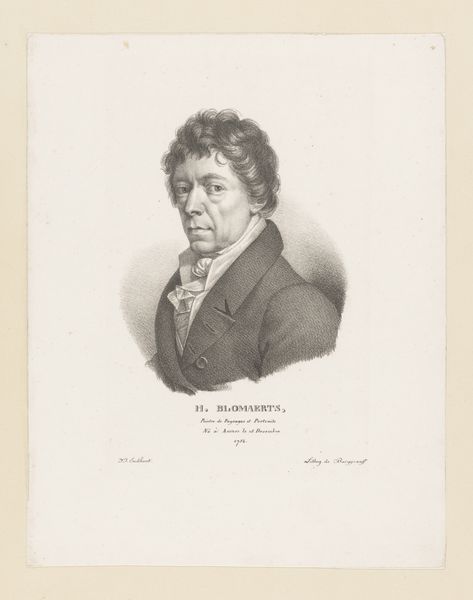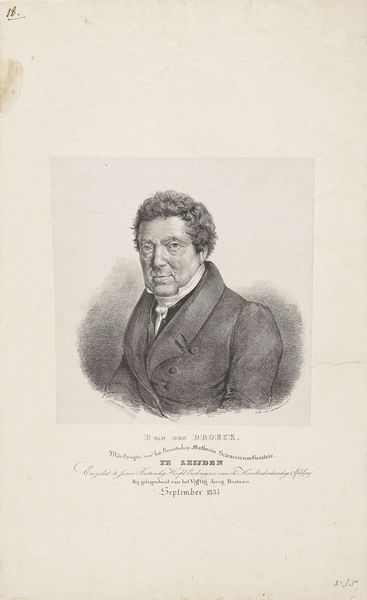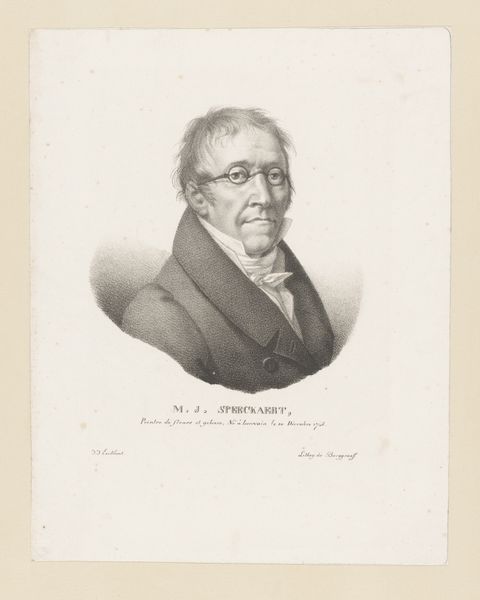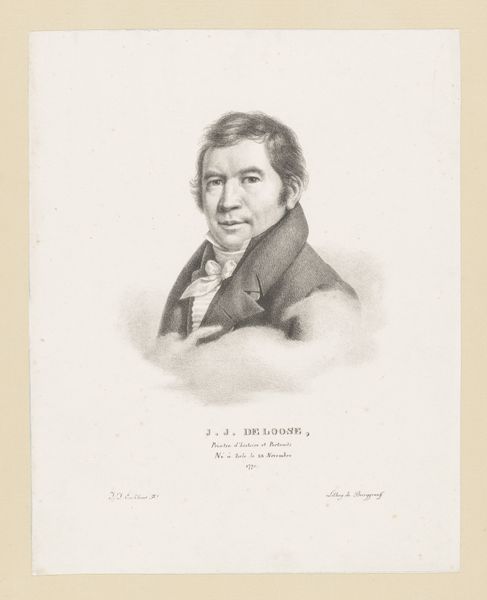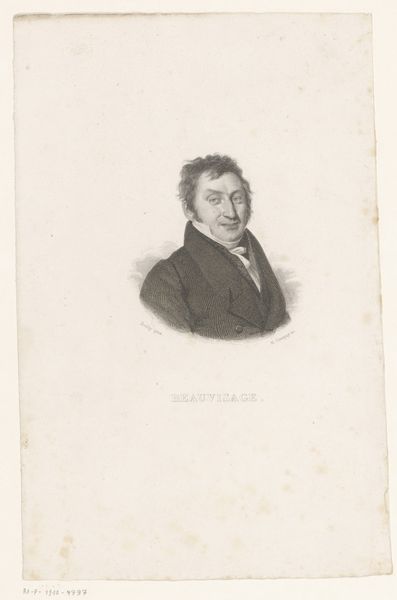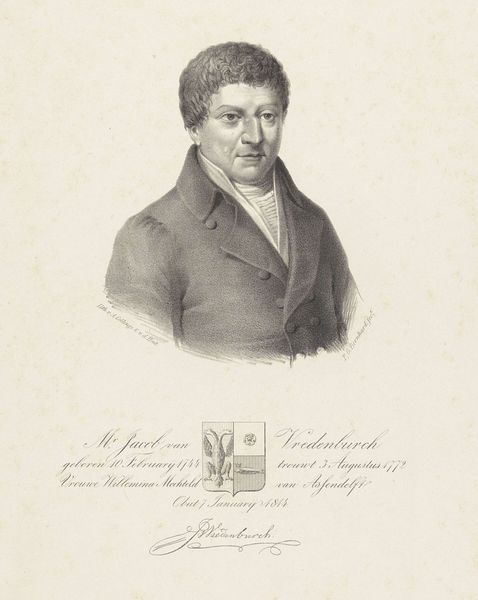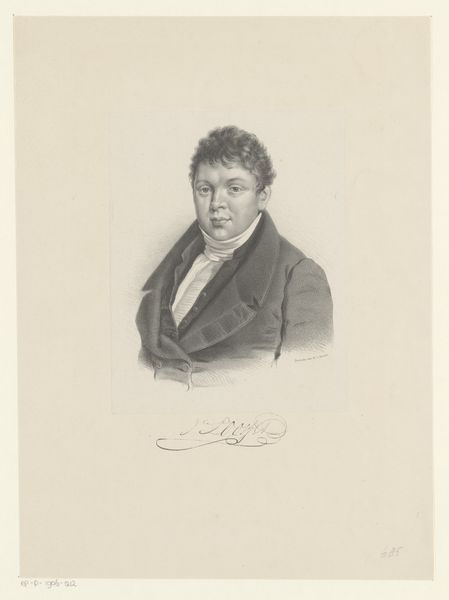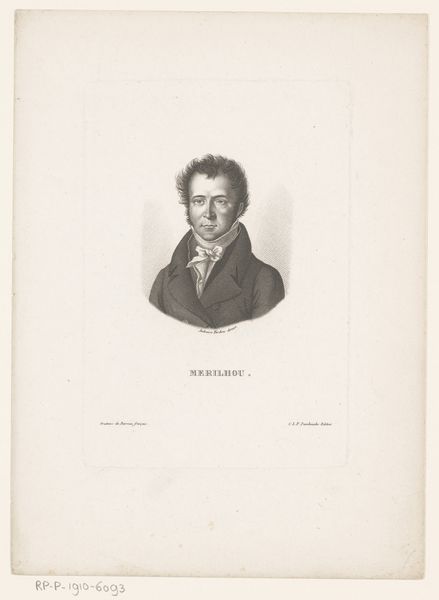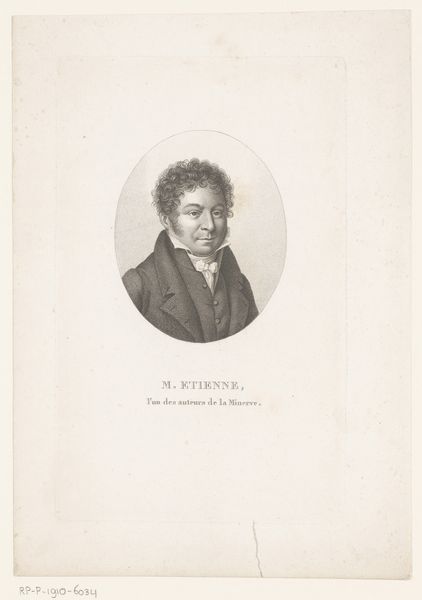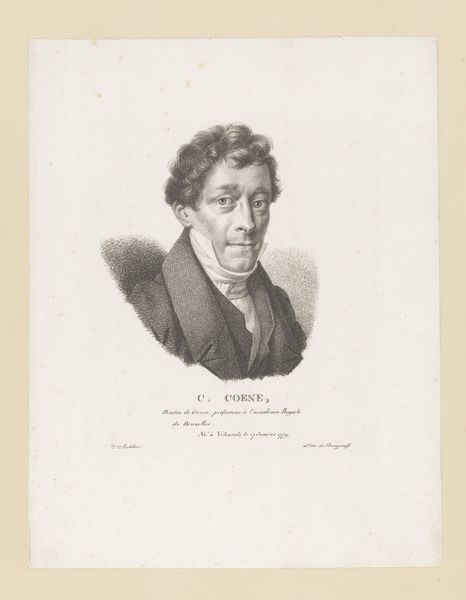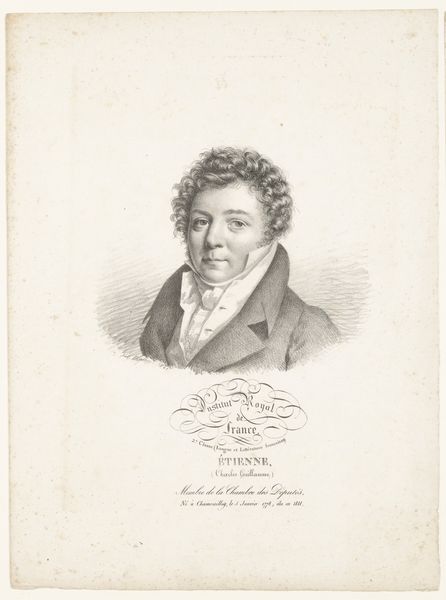
print, etching, engraving
#
portrait
#
neoclacissism
#
16_19th-century
# print
#
etching
#
engraving
Dimensions: height 305 mm, width 235 mm
Copyright: Rijks Museum: Open Domain
Editor: This is "Portret van Henri Voordecker," an engraving and etching from 1822 by Guillaume Philidor Van den Burggraaff, currently at the Rijksmuseum. The man looks stern, powerful, and important, the kind of face you might find on a Roman coin! What can you tell me about this work? Curator: The sternness you perceive certainly connects to the enduring influence of classical ideals during the Neoclassical period. The very act of creating and displaying a portrait evokes specific traditions around commemoration and status. But observe, too, the contrast. There's a subtle, almost Romantic softness in the etched shading around his face. What feelings does this combination evoke in you? Editor: I notice that too. There’s a balance between projecting an image of power and allowing for something more intimate. Like seeing the person beyond the status. Is that contrast intended to make us consider more than just his social standing? Curator: Exactly! He isn't depicted with overt symbols of wealth or power. This is intentional. It encourages the viewer to contemplate not just the *what*—his status—but the *who*—his character. Consider how that subtle deviation reinforces cultural ideals while simultaneously hinting at individual worth. Editor: It is striking. So, while adhering to the portrait tradition, it almost suggests a slight subversion, or at least a quiet personal narrative alongside the public one. Curator: Precisely! This interplay between convention and subtle variation is where so much meaning resides. Visual language isn’t static, and portraits are always doing more than meets the eye. It's like reading between the lines of history itself. Editor: That gives me a new appreciation for the cultural layers at play within what seemed at first a simple portrait. Thank you!
Comments
No comments
Be the first to comment and join the conversation on the ultimate creative platform.
